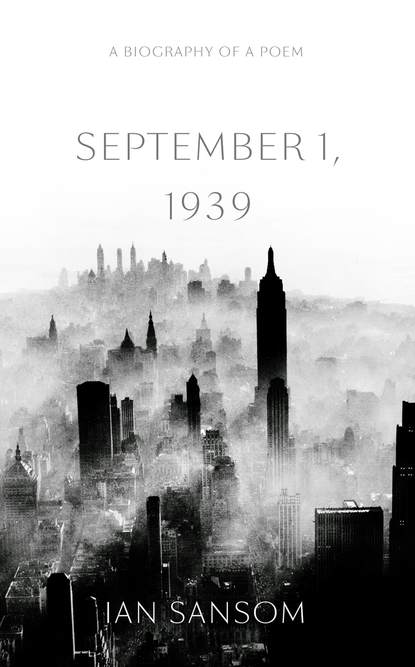По всем вопросам обращайтесь на: info@litportal.ru
(©) 2003-2024.
✖
September 1, 1939: A Biography of a Poem
Настройки чтения
Размер шрифта
Высота строк
Поля
These are also good questions.
‘September 1, 1939’ is an important poem, I believe, and worthy of scrutiny, because it provides us with a rare glimpse of a writer in the act of reinventing himself, at a culminating moment in world affairs. Like Ulysses and The Waste Land, like Guernica and The Rite of Spring, this poem is a snapshot of the artist in extremis, working at the farthest reaches of his capacities.
But ‘September 1, 1939’ is not only one of those rare coincidences in literature in which the force of history meets personal psychology and ideology, to produce something truly marvellous – it also represents a moment of crisis, where the great pressures at work both outside and inside the poem force certain flaws to become apparent. Not only that, it’s a poem whose troubled history involves its own self-destruction and reinvention: it therefore represents the art object as living organism, something that grows and changes, that is understood, misunderstood, appropriated, abandoned, recycled and reused, again and again. Above all, it is a poem that still reverberates with meaning and controversy, a poem that readers return to at times of personal and national crisis: it turns out that the ‘guy’ who inhabits Auden’s poem is us.
The aim of this book, then, is to demonstrate how a poem gets produced, consumed and incorporated into people’s lives – how, in the words of another of Auden’s great poems, ‘In Memory of W. B. Yeats’, the work of a poet becomes ‘modified in the guts of the living’, and not just modified, but colonised, metabolised, metastasised. It is a record of how and why we respond to great art.
Or, at least, it is a record of how and why I have responded to this particular example of great art, and of how the work of this particular poet has become modified in these particular guts – modified, metabolised and metastasised. There has been so much written about Auden by so many people – brilliant and insightful people – over so many years, that the best I can do is to try and explain the impact that reading and studying this poem has had on me. Not because there’s anything particularly interesting about me – on the contrary – but because I might usefully represent the common reader, the sensual man-in-the-street, the entirely average individual with a rather unusual interest in a particular work of art.
In the end, I hope that this book amounts to more than a record of my own peculiar tastes and notions and gives expression to that common sense of awe and inadequacy that we might all experience in the presence of great art, for how can one possibly begin to cope with someone like Auden, who was clearly a genius, and with something like this, which is clearly a masterpiece? What can one possibly say, except … ‘Wow!’?
September 1, 1939 (#u5f5ad856-0dad-5c02-bd43-a8127e0f707c)
I sit in one of the dives
On Fifty-Second Street
Uncertain and afraid
As the clever hopes expire
Of a low dishonest decade:
Waves of anger and fear
Circulate over the bright
And darkened lands of the earth,
Obsessing our private lives;
The unmentionable odour of death
Offends the September night.
Accurate scholarship can
Unearth the whole offence
From Luther until now
That has driven a culture mad,
Find what occurred at Linz,
What huge imago made
A psychopathic god:
I and the public know
What all schoolchildren learn,
Those to whom evil is done
Do evil in return.
Exiled Thucydides knew
All that a speech can say
About Democracy,
And what dictators do,
The elderly rubbish they talk
To an apathetic grave;
Analysed all in his book,
The enlightenment driven away,
The habit-forming pain,
Mismanagement and grief:
We must suffer them all again.
Into this neutral air
Where blind skyscrapers use
Their full height to proclaim
The strength of Collective Man,
Each language pours its vain
Competitive excuse:
But who can live for long
In an euphoric dream;
Out of the mirror they stare,
Imperialism’s face











